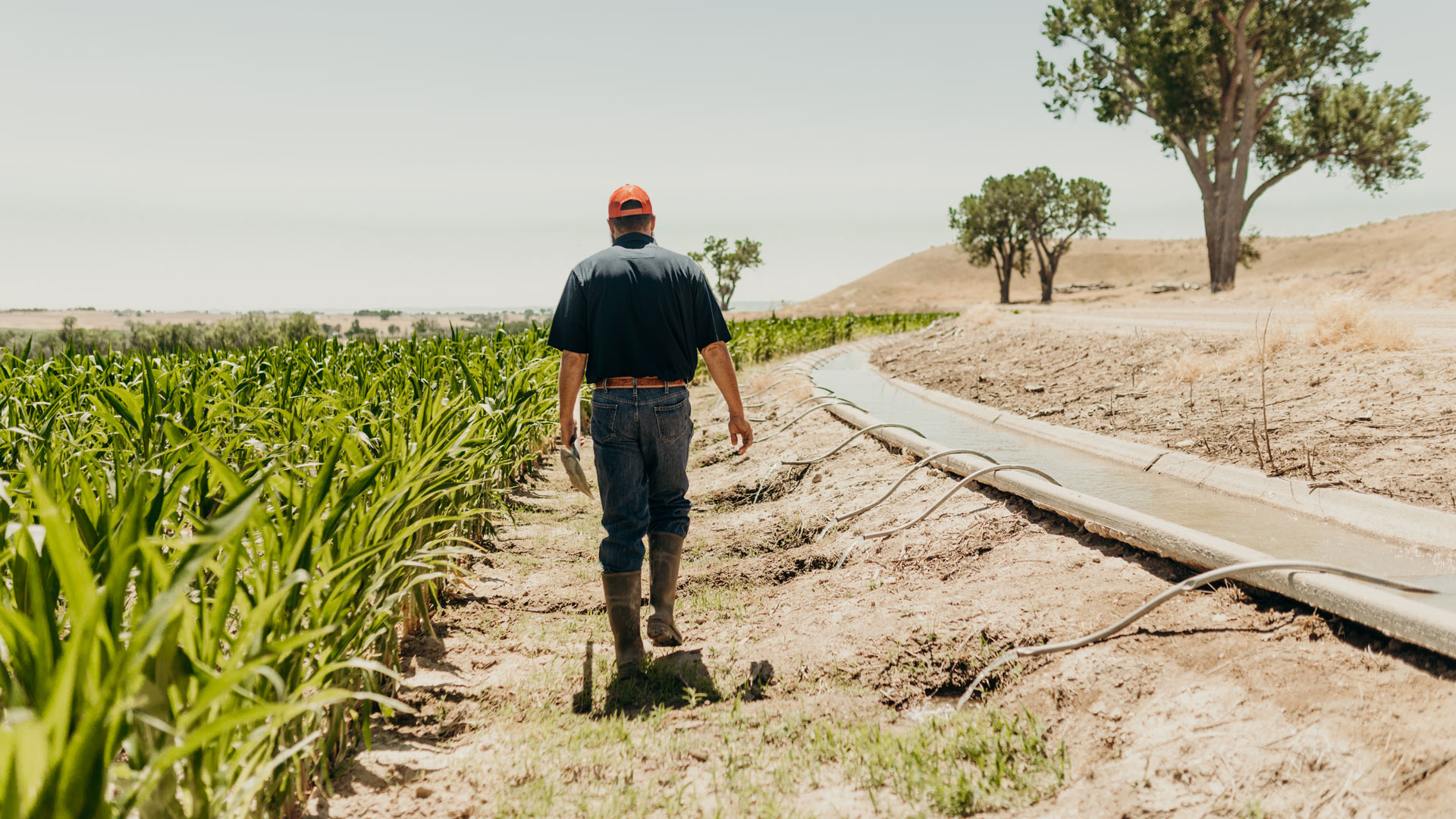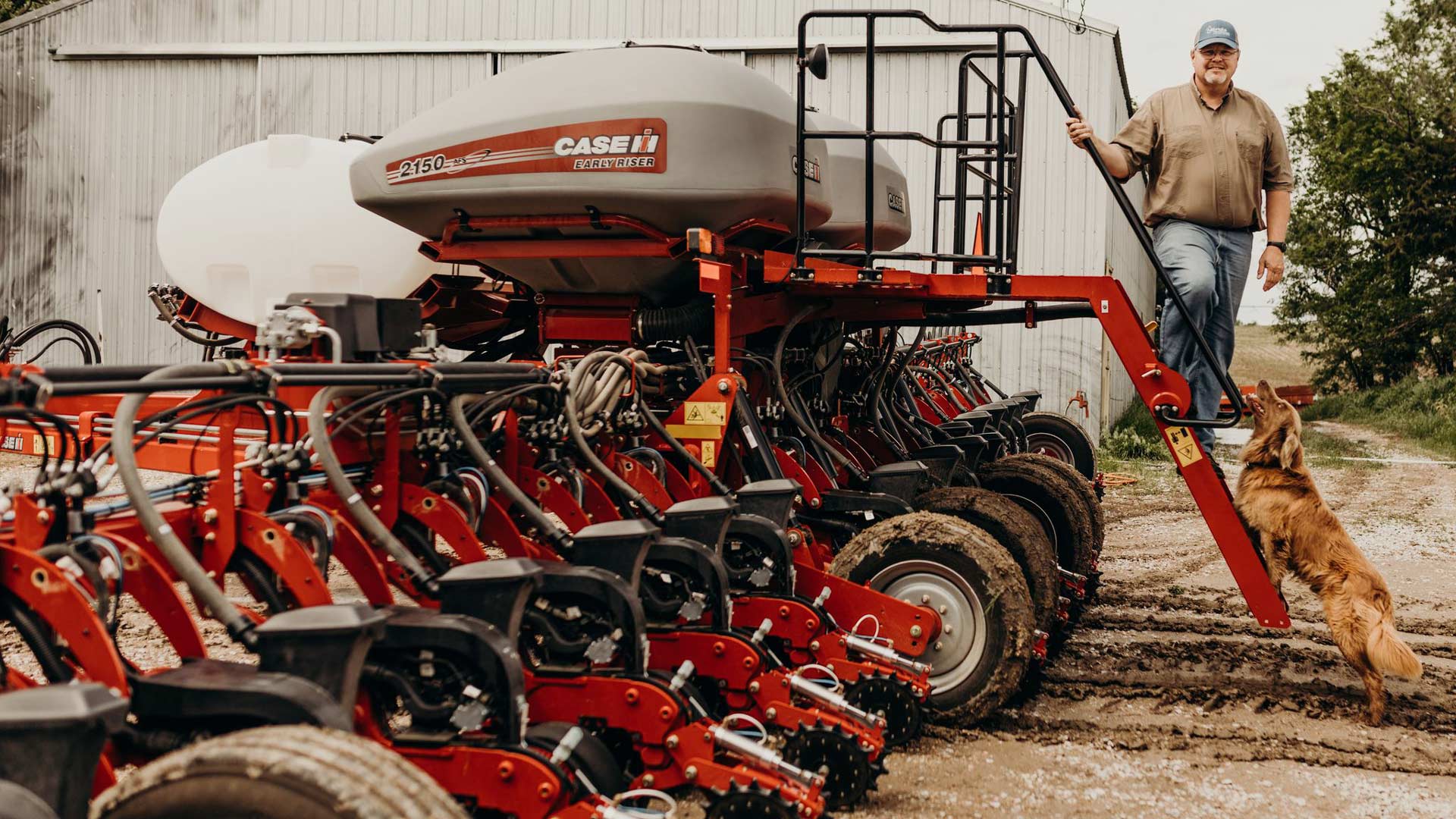The corn harvest is moving along in Nebraska, and it won’t be long before piles of golden kernels are safely stored away and the fields are empty. But getting to that point takes a lot of planning, hard work and determination from the state’s corn farmers.
How do Nebraska’s corn farmers get it done? Here are six facts you didn’t know about Nebraska’s corn harvest and how the men and women make it happen:
1. How Farmers Know When Field Corn Is Ready to Harvest
Field corn usually takes about 90-100 days to mature. Generally, late April to May is when corn is planted in Nebraska. Therefore, it usually reaches maturity in the fall and is ready to harvest in September or October.
Farmers know when field corn is ready to harvest by testing its moisture content. That’s because field corn needs to be allowed to dry—a process that turns the stalks brown and brittle and the kernels hard—before it can be safely stored in bins.
Corn that isn’t dry enough can spoil in storage if the farmer doesn’t have a built-in dryer. Because of that, most corn buyers only pay premium prices for corn that contains very little moisture—typically around 15%. They may still buy corn with a higher moisture content than that, but usually pay a lower price to the farmer.
Farmers must strike a balance between leaving corn in the field long enough to dry naturally or harvesting it at a higher moisture content and then drying the kernels before selling or storing the corn. Farmers usually dry their corn with a grain dryer, which blows heated air across the kernels of corn. While grain dryers are effective at removing moisture content, they are an extra operating expense most farmers try to avoid if they can.
2. How a Combine Harvests Corn
Corn is harvested using a combine, which performs several functions at once as it drives through the field. Highly sophisticated, many of today’s combines are outfitted with GPS and other smart farming technology.
A combine:
- Cuts the cornstalks and pulls the ears of corn into the combine
- Removes the corncobs from the rest of the ear, which is called chaff
- Separates kernels of corn from the corncobs, a process called threshing
- Puts the cleaned corn kernels into a storage area and then blows the chaff – pieces of corncob and cornstalks out the back of the combine onto the field behind it and is often fed to livestock
3. How Long It Takes to Harvest Corn
How long it takes a farmer to harvest corn depends on several factors, starting with how many acres the farmer has to harvest, what equipment is being used and how many people are helping the farmer.
When it comes to how corn is grown and harvested, planting and harvest are both a system with several moving parts. At harvest, there are multiple steps required to get the corn into the combine, transported and then stored.
The combine only has so much storage capacity. When the combine is full of corn, the farmer must empty the kernels from the combine into a transport vehicle, often called a grain cart, so the corn can be hauled to market or storage. Then, the newly empty combine can go back to driving up and down the cornrows and harvesting the crop.
In an efficient system, there’s always a grain cart with enough capacity for the combine to empty into when it is full. That way, the person driving the combine only has to stop briefly to unload and can quickly go back to harvesting more corn. Sometimes, combines don’t stop at all to unload—they empty corn while moving by dumping into a transport vehicle that drives alongside them in the field. Grain carts are tractors with a large holding capacity attached to the back and are able to drive in the field. They then drive to the side of the field, often to a waiting semi-truck to unload the corn to take it to storage. Then, the grain cart goes back to the field.
However, if the combine’s storage is filled to maximum capacity and the storage vehicles are full or aren’t back yet from transporting the corn, the farmer has to stop. Then, he or she has to wait until a grain cart arrives or get out of the combine, move the corn themselves and then resume harvesting when they return to the field.
Wet weather also stops harvest because farmers can’t harvest corn in heavy rain. If the corn is too wet or the fields are too muddy for field equipment, harvest can’t continue until the weather dries out. Even if the weather looks ideal the next day, they must wait for the corn to be at the correct moisture level to continue.
4. Why Do Farmers Not Harvest All Their Corn?
The goal of every farmer is to harvest all the corn and get it sold or safely stored for the winter. However, getting corn harvested is sometimes a race against oncoming winter weather.
While combines can run in cold weather, they are not designed to run in snow. If a winter storm arrives and fills an unharvested cornfield with snow, that farmer could be out of luck.
The main reason a farmer would run out of time to harvest a field would be wet weather. The best weather for harvesting corn is dry weather. Along with snow and ice, high moisture and mud are the main adversaries of a combine.
4. What Farmers Do with Corn and Cornstalks After Harvest
Farmers usually sell their corn after harvesting or store it in large, circular steel buildings called grain bins. Corn is usually sold to a grain elevator, which is a business that buys corn from farmers and then sells it to other buyers. Corn stored at the farmer’s property may be sold to market at a later date or, if the farmer raises livestock, some of the corn may be fed to the animals.
Cornstalks are often left in the field after harvest to put organic material back into the soil. Farmers also may turn cattle out in cornfields after harvest because cattle eat the cornstalks and ears of corn the combine missed as a source of nutrition. Other farmers bale their cornstalks and use them for bedding for cattle and other livestock during the winter.
5. How Farmers Prepare Their Fields for Winter
After harvesting, farmers often will apply fertilizers to replenish the nutrients in the soil. Some will plow their fields to promote better drainage, but many choose to leave the fields unplowed to prevent erosion and promote soil health.
Farmers with livestock may also clean manure out of their animal pens and barns and then spread the manure onto fields after harvest. This puts nutrients back into the soil, promoting soil health.
By diligently completing these tasks, corn farmers ensure that their fields are adequately prepared for winter and set the stage for successful planting and growth in the upcoming spring.
Related Posts
Corn Irrigation: Providing Responsible, Sustainable Growth for Nebraska Crops
Irrigation is crucial for Nebraska's agricultural economy, providing corn and other crops water in a sustainable manner that protects the state's water supplies. Modern irrigation systems in Nebraska allow farmers to precisely water their [...]
Trade Missions: Reaching Global Corn Customers, Strengthening Partnerships
Cultivating relationships is key to successfully marketing any product. In today's economy, that often means going global. The Nebraska Corn Board connects farmers with customers around the world through international trade missions. During these [...]




